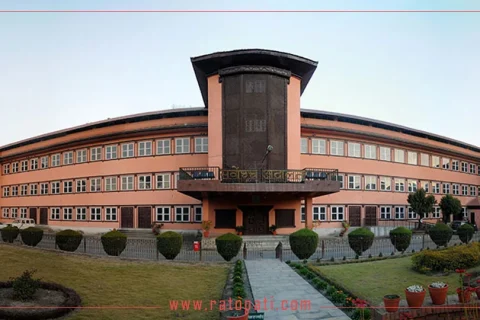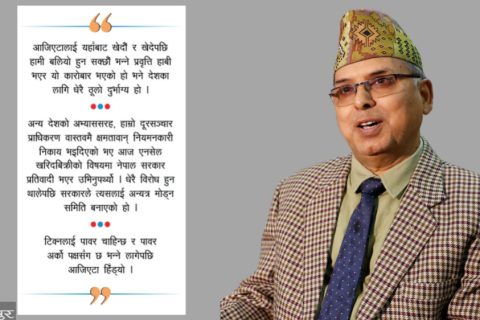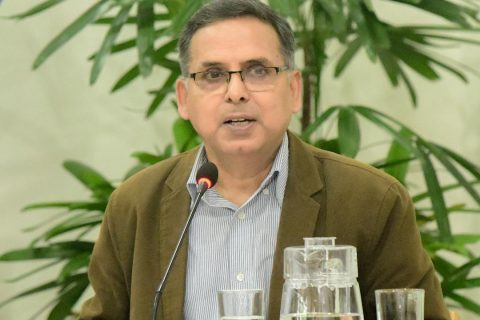Dr Bipin Adhikari
After 11 years of armed movement a consensus was reached between the parties to initiate peace process in the year 2006. During the course of peace process determining the status of disappeared persons during the conflict period and establishment of Truth and Reconciliation Commission took primacy. These highly contentious issues never generated the required consensus from the 2008 Constituent Assembly and the establishment of the Commission has been in abeyance for more than 7 years.
Two separate and independent Bills were presented before the then Constituent Assembly. The first Bill was regarding establishment of a Commission to determine the status of persons disappeared during the conflict period and providing appropriate relief to the victim or victims’ family. The second Bill was for the establishment of Commission for Truth and Reconciliation to pave road for peaceful and prosperous future. However, both Bills due to various issues could not get the approval from the former Constituent Assembly and the Constituent Assembly was finally dissolved in the year 2012.
Decision to consolidate both the Bills and establishment of a single Commission empowered with both the functions of investigating the accounts of disappearances and for the purpose of Truth and Reconciliation into one single ordinance was taken as there was no Constituent Assembly at that time.
The present Draft Ordinance is not the brainchild of the Government but was drafted at behest of and as per the understanding reached between all the political parties. There were two schools of thoughts one demanding total amnesty to all acts done during the period of conflict and the other demanding trial of all instances of violation of Human Rights and instances of criminal offences. A middle path of establishing an independent, competent, unbiased and quasi-judicial commission for purpose of investigation of cases of disappearances and to seek Truth and initiate Reconciliation for peaceful solution was envisioned.
The Ordinance deals with all 4 aspects of Truth and Reconciliation such as i) exploring the truth, ii) identifying incidents which needs prosecuting, recommending instances where amnesty is to be granted assigning cogent reasons in support of such recommendations paving way for peace process, iii) provision for reparation and iv) institutional reform. The purpose of imbibing these 4 aspects in the Ordinance was to ensure and guarantee of non repetition of conflict.
In light of the facts stated above, I believe the Ordinance per se is not bereft of any merit. The only point which could not generate equivocal political consensus was on the power of the Commission to initiate trial and recommendation for amnesty.
Wile one can defend the Ordinance that the Commission, with retired Judge of Supreme Court of Nepal or Chief Justice of Appellate Court as the Chairperson, is competent in maintaining the sanctity of justice without being biased and applying judicial mind taking in account all the international treaties and conventions, Constitutional provisions, gross violation of Human Rights and other national laws.
The Ordinance defines victim, perpetrator, Human Rights, gross violation of Human Rights, reparation and deals with all the aspects associated with Truth and Reconciliation process and is a complete code capable of addressing the peace process.
With some reservation on some key issues, one can accept the judgment delivered by the Supreme Court of Nepal annulling the Ordinance. The Apex Court relying on prior judgment directed the establishment of two different Commissions instead of a single Commission as envisioned by the Ordinance. However, one can dispute whther the interpretation of the prior judgment was correct. After carefully reading the prior judgment of the Supreme Court, one can hold on that the court does not explicitly direct in formation of two separate Commissions and instead lays down two specific work; first direction was to investigate the instances of disappearances, finding their status, criminalizing those acts, initiating proceedings against the persons responsible and providing reparation; and second direction was to probe the truth regarding causes, actions and impacts of the conflict period and explore possibilities of reaching an amicable solution towards reconciliation and peace.
A single Commission is competent to handle both the issues and the Apex Court had no theory when it directed about separate institutions. Even though i hold on the highest and utmost respect and faith in judiciary, it failed to determine the reason and the provision of the Interim Constitution on the basis of which the Supreme Court concluded Sections 13, 23 and 29 to be ultra vires. While welcoming the enthusiasm shown by the Apex Court in administering justice, one can question the extent till which such judicial activism should be allowed. To prevent misuse or unwanted encroachment of legislative power the Supreme Court should clarify the extent, scope and circumstances when the power of judicial review can be exercised.
It is certain that the Ordinance will be rejected and new Bills will be presented before the Constituent Assembly in consonance with the Apex Court’s judgment. I believe that ‘Politics’ should guide ‘Procedure’ but the recent judgment on the contrary has laid the foundation for ‘Procedure’ to guide ‘Politics’. His stand regarding ‘Politics’ being guiding force has worked well in South Africa from where the Truth and Reconciliation Model has been adopted from.
When the Constituent Assembly was dissolved the Government tried to promulgate this Ordinance in absence of a Constituent Assembly. The practice of ruling by Ordinance should be discouraged as it is not a sound principle of governance in a Democratic State.







